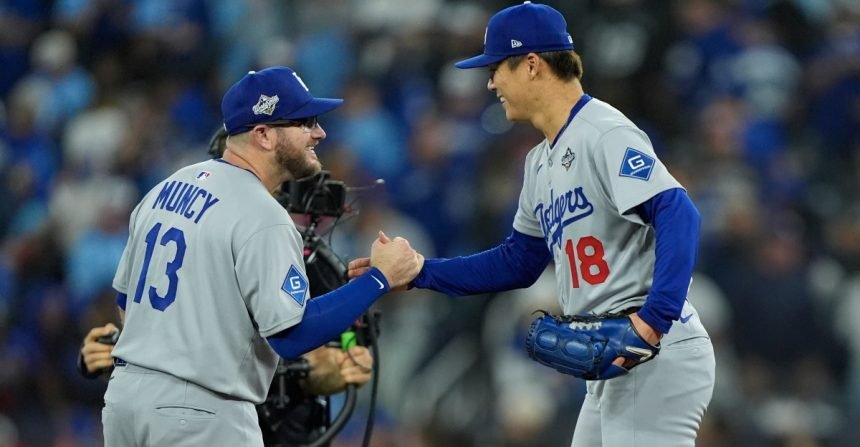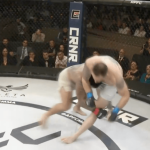Major League Baseball is the only one of the Big Four North American sports leagues not to have a salary cap. As a result, a potential salary cap is constantly–and I do mean constantly–a topic of discussion.
The whole salary cap issue does wax and wane with the seasons, so to speak, and it’s waxin’ time right now, baby. That’s because the Los Angeles Dodgers are in the World Series once again. This marks the fifth Dodgers National League title in the last nine years. There have always been inequalities in MLB’s financial structure, but the Dodgers’ financial and competitive dominance has brought the whole thing to a head, as Jeff Passan of ESPN wrote recently.
Those discussions are coming. They’re already here, and they will persist, especially if the Dodgers win back-to-back World Series for the first time since the New York Yankees’ threepeat between 1998 and 2000.
To put it succinctly, owners want a salary cap to reign in teams like the Dodgers from spending as much as they are. The player’s union does not want a salary cap because they like the fact that rich teams like the Dodgers can go out and spend like their wallets are on fire. It’s going to result in a nasty labor fight that might derail the entire 2027 season, which will be fun.
But the salary cap fight encompasses multiple issues. This is something that I think a lot of people miss, and it’s something the owners and the union will need to agree on: what problem are we trying to solve? Whether or not a salary cap even makes sense depends on which of the following issues are the most important one or ones to either side.
Players aren’t getting a big enough slice of the revenue pie
- Would a salary cap fix it? Not by itself.
In every business, revenue is split between the labor and the ownership. Ideally, there is a fair and equitable split between laborers and ownership. That is not always the case, and business ownership often taking advantage of their laborers is why we have labor laws in the first place.
So what makes a fair and equitable split between ownership and labor in a professional sports league? That’s a loaded question, but we do have a starting point by looking at what the other major sports leagues do–namely, the National Football League and the National Basketball League.
Cap structures, league revenues, and revenue splits can get very quickly, so keep in mind there are rabbit holes on rabbit holes to go down here. With that in mind: the current NFL competitive bargaining agreement provides players with 48.5% of the league’s revenue. The NBA delivers 51% of basketball-related income to players, with a guaranteed 49% floor. Additionally, the NHL CBA splits the revenue 50-50 between the league and the players.
Since MLB doesn’t have a salary cap and their league revenue sharing is different, it’s a different beast entirely. But with MLB’s league revenue hitting an all-time high of $12.1 billion in 2024, you’d expect player salaries to total $6.05 billion for an even 50-50 split. But total payroll allocations from 2024 totaled only $5.1 billion, putting the revenue split at about 42/58 in favor of the owners.
Now—this is, admittedly, educated conjecture. We don’t know for sure what percentage of revenue players are getting because it’s not in the CBA and the league doesn’t want to share its full financials (more on that below). But even if you spot the players hundreds of millions of additional dollars in this scenario, a salary cap wouldn’t help that by itself, and this is the primary reason why the MLB player’s union resists it.
Teams aren’t spending enough money
- Would a salary cap fix it? Haha, no.
So how come MLB players are getting proportionally less money than their NFL, NHL, and NBA counterparts if the Dodgers are spending $350 million on payroll—over double the median payroll of $162 million? It’s because there are a bunch of cheapskate teams, that’s why.
Almost a quarter of the league (the Washington Nationals, Cleveland Guardians, Tampa Bay Rays, Pittsburgh Pirates, Chicago White Sox, nomad Athletics, and Miami Marlins) had payrolls that were less than two thirds the median league mark. Many of those owners would argue that they are running the teams in the red, as Pittsburgh’s owner did before the season kicked off.
We know two key things about this, though. One, that the math overall isn’t mathing; again, MLB players receive a much lower percentage of the revenues overall than the other three of the Big Four North American sports leagues. And two, that teams guard their finances with utmost secrecy and you therefore can’t trust that they’re telling you the truth about whether or not they’re making money.
To put it another way: the Dodgers give Tyler Glasnow and Blake Snell a bunch of money, but it was the Rays who didn’t do that. A salary cap would not fix this issue.
Teams aren’t spending enough on free agents
- Would a salary cap fix it? No, and it might hurt it.
Teams not spending in general is one thing. But the MLBPA prides itself on protecting the earning power of veterans and free agents, and a salary cap won’t help—and might actually be a net negative on this aspect of the game.
Now more than ever, front offices are smart and ownership wants investments spent to be efficient. If your team is bad, spending on free agents to make your team marginally better (but still miss the playoffs) just doesn’t make sense. So, in a way, it’s logical that some teams that would otherwise spend don’t do so in down years.
Additionally, teams have learned that free agents are risky gambits. Without getting too much into the weeds, MLB teams have six full seasons, and sometimes one partial season, of control before a player gets to free agency. That’s a really long time! Consider even a roughly best-case scenario: a team drafts a 21-year-old from college. That player spends two calendar years in the Minor Leagues, making his debut in July in his age-23 season. Under current rules, he would, at minimum, become a free agent in his age-30 season.
How do you get teams to spend more on free agents? You make it more rewarding to sign them. The league implemented a draft lottery to try and limit the downsides of tanking, which is a start. But the real solution here is cutting MLB service time down–to four years instead of six. That would make a significantly higher ratio of free agents available before they turn 30. All a salary cap would do is limit the ability for teams that want to and find value in signing free agents; it wouldn’t induce demand.
There isn’t enough league parity
- Would a salary cap fix it? Kind of, but not really.
Since 2014, 14 of the 30 MLB clubs made the World Series, with nine different winners among them. During that stretch, all 30 MLB teams made the playoffs at least once.
Baseball is nothing if not an exercise in parity. The fun part about baseball is that, on any given night, any team can beat any other team. The best teams in MLB win only about 60% of their games, while the worst teams in MLB still win about 40% of their games.
A salary cap wouldn’t really fix league parity. The only thing it would do would limit the dominance of teams like the Dodgers who go on runs where they win a decade’s worth of divisions in one go. But with three Wild Cards, it’s entirely possible for a team to squeeze into the playoffs, and because baseball is unpredictable, those teams can go surprisingly far.
Not every team can realistically win a championship
- Would a salary cap fix it? Yeah.
The Kansas City metro area is only the 31st largest in the United States, and its media market ranks even lower at 33rd overall. That has not stopped the Chiefs from becoming a dominant team; the NFL is built so that any team has a chance at a title and even multiple titles if they are well-run enough.
This is where the salary cap argument is really effective, because to win a championship, you have to spend a lot of money. The most recent decade bears this out: per Spotrac, 12 of the 20 most recent World Series teams ranked in the top five of league payroll that year, and a whopping 16 of those 20 teams ranked within the top 10.
Can teams make the playoffs if they don’t spend? Yes. Can teams go to the League Championship or World Series if they don’t spend? Yes. Can teams with lower payrolls beat teams with higher payrolls in the playoffs? Yes.
But the way that baseball’s revenue situation works makes it structurally difficult for teams with lower revenues to regularly compete with teams with more revenue. A salary cap would directly result in teams with lower revenues making up a greater proportion of competitive teams, and would open the door for teams like the Royals to regularly compete within the playoffs.
So, should a salary cap exist?
A baseball salary cap simply wouldn’t solve many of the issues facing the league today. It wouldn’t give players a bigger slice of the revenue pie. It wouldn’t force teams to start spending on free agents. It wouldn’t force teams to spend in general. It wouldn’t impact day-to-day parity.
But if players want more money and the league wants teams like the Reds or the Rockies or the Rays or the Royals to have a legit shot at titles nowadays, the real solution is the implementation of a salary floor tied to revenue. With a floor would come a cap, allowing teams within a band to spend as they see fit.
It will be fascinating to see what the next CBA negotiations look like. It will be contentious, and we may not even see a 2027 MLB season. But one thing’s for sure: change is brewin’. What change? We’ll see.











